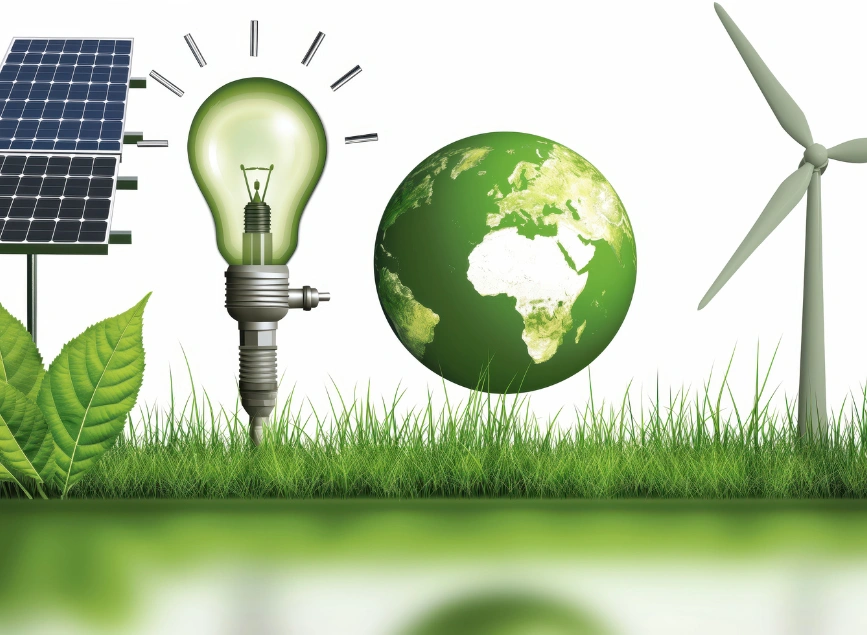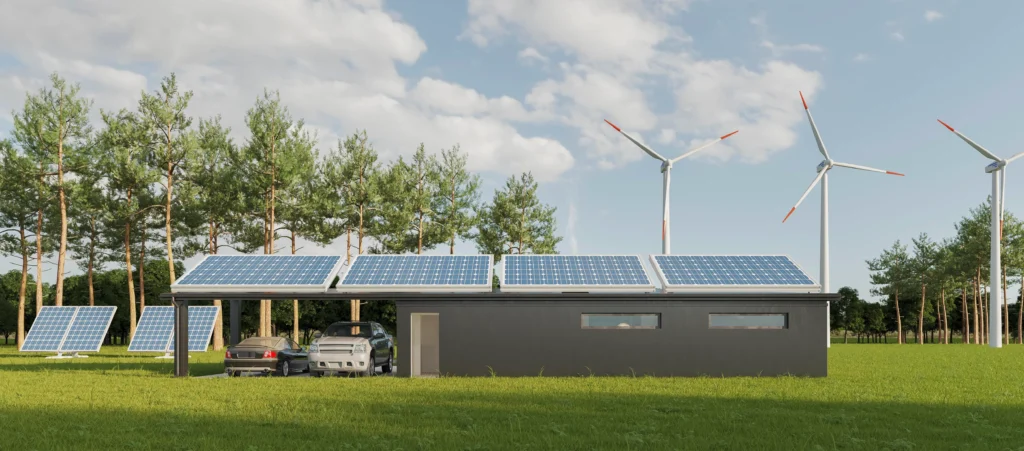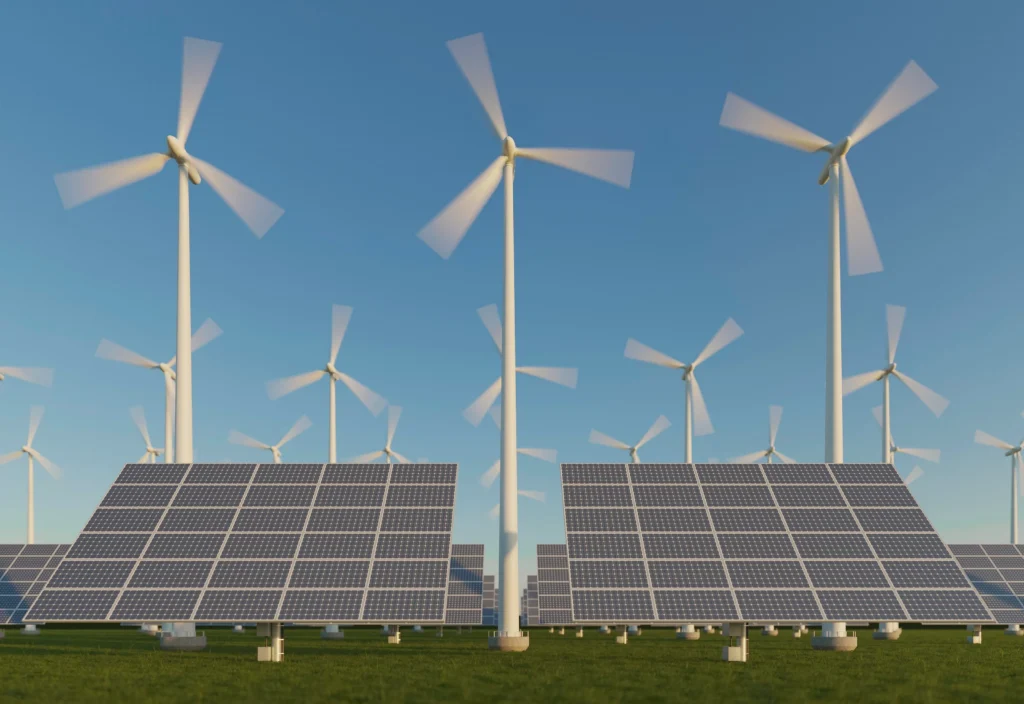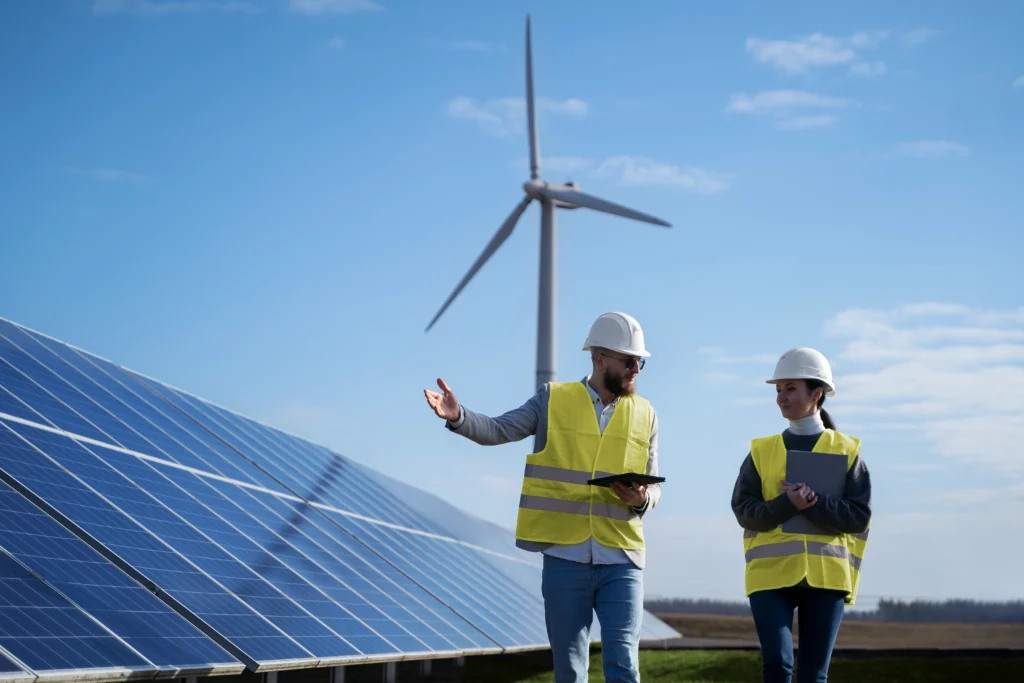
Renewable Energy Revolution: Powering a Sustainable Future
Estimated reading time: 7 minutes
Table of contents
In recent years, the world has witnessed a significant shift in the way we produce and consume energy. This shift, known as the “Renewable Energy Revolution,” is driven by a growing awareness of the environmental impacts of traditional energy sources like coal, oil, and natural gas. As concerns about climate change, pollution, and dwindling fossil fuel reserves increase, renewable energy has emerged as a powerful solution. From solar and wind to hydro and geothermal, renewable energy is reshaping the global energy landscape, offering a cleaner, more sustainable path forward.
What Is Renewable Energy?
Renewable energy comes from natural sources that are replenished over time, such as sunlight, wind, rain, tides, and geothermal heat. Unlike fossil fuels, which are finite and release harmful emissions when burned, renewable energy sources produce little to no greenhouse gases. This makes them a crucial component in the fight against climate change.
The key types of renewable energy include:
- Solar Power: Harnessing energy from the sun using photovoltaic cells.
- Wind Power: Utilizing wind turbines to generate electricity.
- Hydropower: Using water flow in rivers and dams to produce energy.
- Geothermal Energy: Extracting heat from beneath the Earth’s surface.
- Biomass Energy: Producing energy from organic materials like wood, crops, and waste.
Each of these energy sources plays a vital role in reducing carbon emissions and creating a sustainable energy future.
Read More: The Art of Building a Diversified Investment Portfolio
Types of Renewable Energy – At a Glance
| Energy Source | How It Works | Key Benefits | Leading Countries |
|---|---|---|---|
| ☀️ Solar | Converts sunlight into electricity via solar panels | Low cost, accessible, scalable | China, USA, India |
| 💨 Wind | Wind turbines generate power from moving air | Clean, efficient, job creation | Denmark, UK, Germany |
| 🌊 Hydropower | Water flow turns turbines to generate electricity | Reliable, long lifespan, supports water management | Brazil, Norway, Canada |
| 🌋 Geothermal | Uses Earth’s internal heat for energy and heating | Constant supply, low emissions | Iceland, Philippines, USA |
| 🌾 Biomass | Burns organic matter for energy | Reduces waste, supports agriculture | Sweden, Finland, USA |
The Rise of Renewable Energy: A Global Movement
The renewable energy revolution has gained momentum worldwide, as nations, industries, and individuals recognize the urgent need to transition away from fossil fuels. Governments are setting ambitious targets to reduce carbon emissions and increase renewable energy adoption. For example, the European Union aims to become carbon-neutral by 2050, while countries like Germany, the United States, and China have made significant investments in renewable technologies.
Solar Power: The Power of the Sun

Solar energy is one of the most abundant and accessible forms of renewable energy. Solar panels, which convert sunlight into electricity, are becoming more efficient and affordable, making solar power a viable option for homes, businesses, and entire cities.
The cost of solar panels has dropped dramatically over the past decade, encouraging widespread adoption. In sunny regions, solar farms are producing electricity at a lower cost than fossil fuels, making it a competitive option for power generation. Countries like China, the United States, and India are leading the world in solar power installations, contributing to the global shift toward cleaner energy.
Benefits of Solar Energy:
- Reduced electricity bills.
- Low environmental impact.
- Job creation in the solar industry.
- Energy independence for remote areas.
Wind Power: Harvesting the Wind’s Potential

Wind energy is another cornerstone of the renewable energy revolution. Wind turbines convert kinetic energy from wind into electricity, providing a clean and efficient way to generate power. Advances in wind turbine technology have made this energy source more reliable and cost-effective.
Offshore wind farms, where turbines are placed in the ocean, have been particularly successful, as wind speeds are typically higher at sea. Countries with vast coastlines, such as the United Kingdom and Denmark, are pioneering offshore wind energy projects, contributing to their renewable energy goals.
Advantages of Wind Energy:
- No emissions or air pollution.
- Can be used in both onshore and offshore locations.
- Creates jobs in manufacturing, installation, and maintenance.
- Complements other renewable energy sources.
Read More: Understanding Financial Market Psychology: Smarter Investing
Hydropower: A Tried-and-True Solution

Hydropower is one of the oldest forms of renewable energy, dating back centuries. It generates electricity by using the movement of water, typically from rivers or dams, to spin turbines connected to generators. Hydropower plants can produce large amounts of electricity and provide a steady, reliable source of power.
While hydropower is a mature technology, it still plays a crucial role in the renewable energy mix. Many countries, including Canada, Brazil, and Norway, rely heavily on hydropower for their electricity needs.
Pros of Hydropower:
- Reliable and consistent energy generation.
- Long lifespan of hydropower plants.
- Can be scaled to different sizes, from small hydro projects to large dams.
- Helps with flood control and water management.
Geothermal Energy: Tapping into Earth’s Heat
Geothermal energy harnesses the heat from the Earth’s interior to generate electricity and provide heating. This renewable energy source is particularly effective in regions with high volcanic activity, such as Iceland, the Philippines, and parts of the United States.
Geothermal energy is highly efficient, as it provides a constant energy supply regardless of weather conditions. It is also a low-emission energy source, making it a valuable asset in the global push for cleaner energy.
Benefits of Geothermal Energy:
- Constant and reliable energy supply.
- Minimal environmental impact.
- Can be used for both electricity and direct heating.
- Long-lasting infrastructure with low maintenance costs.
Biomass Energy: Power from Organic Materials
Biomass energy is produced by burning organic materials such as wood, agricultural residues, and waste. It can be used to generate electricity, produce heat, and even create biofuels for transportation.
While biomass is considered a renewable energy source, it must be managed carefully to avoid deforestation and overuse of resources. Sustainable biomass practices, such as using waste materials or planting fast-growing energy crops, are essential for ensuring that this energy source remains environmentally friendly.
Advantages of Biomass Energy:
- Reduces waste in landfills.
- Provides a renewable alternative to fossil fuels.
- Can be used in existing power plants with minimal modifications.
- Supports rural economies and agricultural industries.
The Benefits of Renewable Energy
Transitioning to renewable energy brings a host of economic, environmental, and social benefits:
- 🌱 Environmental Protection – Reduces carbon emissions and pollution
- 💰 Cost Efficiency – Cheaper energy over time
- 👷 Job Creation – Millions of new jobs globally
- 🌎 Energy Security – Less dependence on imports
- ❤️ Healthier Communities – Cleaner air and better public health
Overcoming Challenges in the Renewable Energy Revolution

Despite the progress, some obstacles remain:
- Intermittency: Weather-dependent sources need better storage systems
- Infrastructure: Upgrading energy grids and transport systems
- Policy Barriers: Outdated regulations and fossil fuel lobbying
Still, with advancing technologies and global cooperation, these challenges are surmountable.
The Future of Renewable Energy
The renewable energy revolution is just beginning. As technology continues to advance, renewable energy sources will become even more efficient, affordable, and widespread. Innovations in energy storage, smart grids, and electric vehicles will further accelerate the transition to a sustainable energy future.
Governments, businesses, and individuals all have a role to play in supporting the growth of renewable energy. By investing in clean energy technologies, adopting sustainable practices, and advocating for policy changes, we can create a world powered by renewable energy.
Conclusion
The renewable energy revolution is transforming the way we power our lives. By harnessing the power of the sun, wind, water, and Earth’s heat, we are creating a cleaner, more sustainable future for generations to come. As renewable energy technologies continue to evolve, the possibilities for a greener world are endless. The time to embrace renewable energy is now—together, we can power the world without compromising the environment.
Share
Hot topics

What Is a Forex Robot and How Does It Work?
If you hang out with traders, in person, online, on Telegram or YouTube, you’ve probably seen someone talking about “Forex bots” or trading robots that can do some of the...
Read more




Submit comment
Your email address will not be published. Required fields are marked *